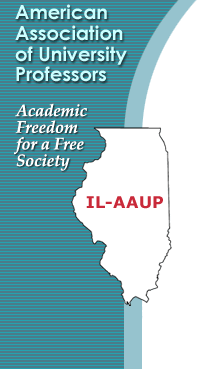 |
|
AAUP Faculty Compensation Survey
Dear Colleague,
Higher education is vital to our collective future. Yet developments in recent decades—diversion of resources to administration, ballooning employment of contingent instructors, and runaway spending on athletics—signal that our colleges and universities are losing focus on their academic missions.
These issues are explored in our annual faculty salary survey, Losing Focus: The Annual Report on the Economic Status of the Profession, 2013–14, released today. (http://www.aaup.org/reports-publications/2013-14salarysurvey)
The analysis in this report can help us to refocus our institutions on producing and disseminating knowledge for the benefit of all.
The report begins with results from this year’s AAUP survey of full-time faculty compensation. The data indicate that the post-recession stagnation in full-time faculty salaries is not yet over. On average, salaries for full-time faculty positions are 2.2 percent higher this year, edging above the rate of inflation for the first time in five years. Faculty members continuing at the same institution earned average salary increases of 3.4 percent, but that is still well below pre-recessionary levels. Again this year, full-time faculty salaries rose more rapidly at private-independent than public institutions, especially at doctorate-granting universities.
The explosive growth in administrative positions is the second major topic in this year’s report. The number of full-time nonfaculty professional employees more than quadrupled between 1976 and 2011, and employment in non-tenure-track faculty positions more than tripled. The number of full-time senior administrators also more than doubled during this period, while tenured and tenure-track faculty employment grew only 23 percent. Both in the longer term and in the immediate post-recessionary period, salaries for the most senior administrators have risen much faster than those of full-time faculty members. While faculty and staff members were told there was no money for raises or continued benefits, presidents were scooping up double-digit percentage increases in salary. Suffering from a decades-old case of “administrative bloat,” higher education is losing its focus.
More evidence that our institutions are losing focus on the academic mission comes from a review of spending on athletics. Between 2003–04 and 2010–11, inflation-adjusted per-student spending on instruction declined at community colleges, and it increased only 1 percent at public four-year institutions and 5 percent at private four-year institutions—but spending per athlete jumped 35, 25, and 29 percent, respectively. Even as institutions purportedly struggle to pay for academic programs, funds seem to be available for athletics. Data from the National Collegiate Athletic Association (NCAA) indicate that the most rapid increase in spending during the last decade was in Division III, where there are no athletic scholarships or big-time television contracts. US Department of Education athletics data show that the number of athletes rose more rapidly at private four-year institutions than in other sectors. Part of the reason is the increased emphasis on athletics in Division III institutions as a means to boost enrollments—and tuition revenues.
Between 2005–06 and 2011–12 median salaries and benefits for head coaches in NCAA Division I-A men’s football and basketball doubled after inflation. Even coaches in “minor sports” racked up increases in compensation far above those earned by faculty members. The evidence is strong: current institutional decision making emphasizes athletics to the detriment of academics and student success.
Too many decisions regarding spending and employment priorities of our colleges and universities are carried out in secret, clouding our collective focus. This report brings some of those practices to light. But the only way for our institutions to regain their focus on expanding knowledge for the benefit of all is for us to get involved.
AAUP members receive a copy of the complete print edition or PDF as a benefit of membership. Non-members may purchase the print version for $95 by visiting http://www.aaup.org/reports-publications/aaup-store. Custom peer comparison reports, which we provide free of charge to active AAUP chapters, are available at http://www.aaup.org/our-work/research/annual-report-economic-status-profession. These reports are also available to non-members at additional charge. Please direct any questions or comments to aaupfcs@aaup.org.
- John Curtis
Director of Research and Public Policy
|
|


